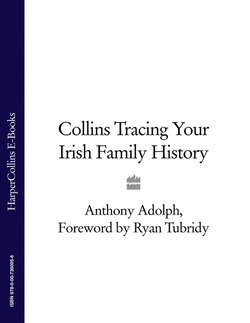Читать книгу Collins Tracing Your Irish Family History - Ryan Tubridy, Anthony Adolph - Страница 43
Civil Registration
ОглавлениеThis is the mainstay of genealogical research back to 1 July 1837, when it started, and was thus operational just before the influx caused by the Great Famine. The records are arranged by the quarter of the year (March, June, September and December) in which the event was registered, and registration was usually within six weeks of the event.
Births record both parents’ full names and father’s occupation.
Marriages give ages of both parties, residences and occupations (many women’s occupations are left blank, even if they actually worked very hard!), and names and occupations of fathers.
Deaths state name and address of an informant – often this will be a close relative. Deaths to June 1969 state age at death, and thereafter the date of birth.
The indexes are with the Registrar General, at the Family Records Centre, but this is due to close. They are online at www.genesreunited.com and www.findmypast.com. A single index to the periods 1866–1920 and 1984–2002 is at www.familyrelatives.org, and an almost complete index for 1837–1901 is at www.freebmd.org.uk. You can order records from the Registrar General at www.gro.gov.uk or 0845 603 7788. You must purchase certificates – the information isn’t released any other way – at £7.00 each, but if you know a detail that will definitely appear on the record, such as a father’s forename, you can have the record checked and receive a partial refund if the document you ordered turns out to be the wrong one.
